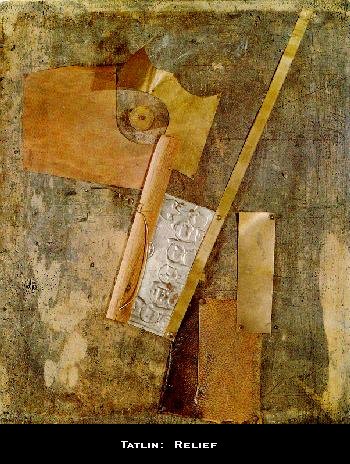

Constructivism may be considered the natural development of the tendency towards abstraction and the quest for new methods of artistic representation characteristic of the early 20th century Russia. First introduced by Tatlin in 1915 (see his Relief of 1914-17), it began with a focus on abstraction through "real materials" in "real space." Tatlin expressed his ideas through unique three-dimensional constructions, Counterreliefs and Corner Counterreliefs, made of paper, glass, metal, or wood. For Tatlin, the material reality (faktura -- texture) of wood, metal, glass, paper, cloth, paint, etc., dictated the very form of the construction. After the Bolshevik revolution of 1917, Constructivism was embraced by most of the avant-garde artists. They tried to apply the laws of "pure" art to objects of utilitarian purpose and mass consumption, and to "build a bridge" between art and the new "savior" of the people -- industry (Gray, 250). In this connection, the Constructivists heralded the death of easel painting and asserted that the artist was a researcher, an engineer, and an "art constructor." Thus, Constructivism was essentially re-adapted to fit utilitarian purposes and to fulfill (if only unconventionally) the material needs of the people. The Constructivist artists and their works affected many facets of Russian life, including architecture, applied arts (particularly furniture, china, textile and clothing design, book illustration), theatre (stage and costume design), and film. [B.B. and C.B.]
